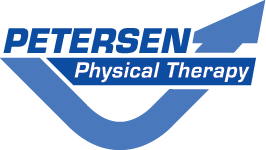Tension headaches are one of the most common types of headache that physical therapists treat. These stress-related headaches can greatly affect your quality of life, making it hard to focus, work, or relax. The good news is that physical therapy offers treatment methods designed to target the root causes of tension-type headaches, easing muscle strain and improving posture to reduce pain and frequency.
Physical therapy can help with tension headaches by addressing the muscular and postural causes of head and neck pain. Through targeted stretches, manual therapy, and movement, physical therapists help release tension in the neck and shoulders, improve posture, and reduce the frequency and intensity of headaches.
In this article, we’ll look at how physical therapy can help reduce chronic headaches, improve the health of your cervical spine, and restore your overall comfort.
How physical therapy helps with tension headaches
A physical therapist can:
- Identify sources of tension. Through posture screening, movement analysis, and manual testing, we determine where tightness or weakness exists in the neck, shoulder, and upper back.
- Provide hands-on treatment. Techniques such as soft-tissue and joint mobilization, massage therapy, and trigger-point release help relieve tension and improve blood flow.
- Teach corrective movement. You’ll learn exercises to strengthen weak muscles and stretch tight bands of tissue contributing to poor posture.
- Guide stress-reduction habits. Breathing drills, relaxation strategies, and ergonomic tips support long-term improvement and fewer stress-related headaches.
Physical therapy for tension headaches isn’t a one-size-fits-all program—it’s tailored to your body, posture, and activity level.
First, make sure your headaches are tension-related
Before we provide specific advice, be sure that your headaches are truly tension headaches. Though some treatment methods may also help other conditions, chronic or episodic tension headaches respond best to physical therapy. These often feel like a tight band of pressure around the head and neck. Some people experience them less than 15 days a month (episodic tension headaches), while others have them more frequently (chronic headaches).
A tension headache typically starts in the neck and shoulder muscles and creeps upward toward the skull. Unlike migraines, tension-type headaches rarely include nausea or visual changes, but they can still cause significant discomfort and reduced quality of life.
If you’re actually dealing with migraines, we recommend you refer to our full article on physical therapy for migraine headaches. If you aren’t sure, see our guide outlining the types of headaches a physical therapist can help.
Elements of tension headache physical therapy
Physical therapy includes a combination of manual therapy, education, and corrective exercise that helps manage tension-type headaches caused by poor posture and stress.
We’ll help you identify emotional and lifestyle stressors
Stress is a common trigger for episodic tension headaches. Financial pressure, work deadlines, and daily responsibilities can lead to chronic muscle tightening in the neck and shoulder area. Over time, this leads to discomfort in the head and neck.
No amount of stretching or massage therapy can fully offset stress without addressing its causes. That’s why your physical therapist will help you identify daily stressors and teach relaxation strategies to reduce their impact.
We’ll help identify mechanical causes: posture and repetition
From a mechanical standpoint, poor posture is one of the biggest contributors to tension-type headaches. Sitting for long periods, using digital devices, or performing repetitive tasks can overwork the neck, shoulder, and upper back muscles. These habits can place strain on the cervical spine, create that familiar tight band sensation associated with tension headaches, or even produce symptoms of TMJ.
During physical therapy, we evaluate:
- Shoulder and head alignment
- Thoracic and cervical spine mobility
- Muscle imbalances between the chest, neck, and upper back
Small posture corrections and ergonomic adjustments can significantly reduce chronic headaches and improve your quality of life.
The posture check: a simple self-test
One way to check for poor posture and tension is to lie flat on your back with arms relaxed at your sides. In yoga, this is called the corpse pose, or Shavasana. If your shoulders lift from the ground or your lower back arches, your body is compensating for tight muscles in the hip flexors, chest, or upper back.
Holding this position for a few minutes allows gravity to align your body and reveal tight areas. This awareness helps guide your physical therapist in developing effective treatment methods.
Understanding the muscles involved in tension headaches
The muscle most commonly associated with tension headaches is the trapezius, particularly its upper section that connects the neck, shoulder, and upper back. This muscle reacts strongly to stress—your shoulders lift and your neck tightens in preparation for action. If that reaction continues for days a month or more, these muscles remain tight and sore.
Other muscles that contribute to tension headaches include:
- Levator scapulae: connects your neck to your shoulder blade.
- Suboccipital muscles: small stabilizers under the skull that often cause upper-neck pain.
- Scalene muscles: assist with breathing but often tighten with poor posture.
Your physical therapist will assess these areas, release tightness, and strengthen supportive muscles to help prevent recurring headaches.
The stress–strain relationship
In physical therapy, we often describe the stress–strain curve, which shows how tissues respond to force. Too little movement causes stiffness; too much leads to pain or injury. The same balance applies to the nervous system—moderate, consistent activity helps prevent tension-type headaches.
Finding this balance allows your body to move freely and reduces the chances of developing chronic headaches.
When to seek professional help
Occasional headaches after a long workday are common, but if you experience pain on more than 15 days a month or notice symptoms such as numbness or radiating arm pain, it’s time to see a professional. Physical therapists can help determine whether your pain stems from posture, stress, or another cause.
The takeaway
Tension headaches can significantly limit your quality of life, but physical therapy provides effective, evidence-based treatment methods. By addressing poor posture, stress, and muscular imbalance, physical therapists can relieve pain, restore mobility in the cervical spine, and help you return to the activities you enjoy.
In our next post, we’ll share specific stretching exercises for tension headaches that you can do at home to relieve discomfort and prevent recurrence.
If you’re struggling with chronic or stress-related headaches, contact Petersen Physical Therapy to schedule an evaluation. We’ll help you restore comfort and control through personalized care.
Meta description (approx. 160 characters): Learn how physical therapy relieves tension-type headaches by improving posture, easing neck and shoulder tension, and enhancing overall quality of life.


















